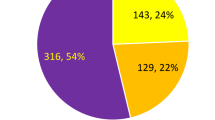Abstract
The acquisition of Bantu noun class prefixes has long been an issue of theoretical interest, due in part to the large number of gender classes. In contrast, the acquisition of Bantu nominal agreement has received little attention. Given findings from other languages, one might expect the phonologically transparent system of Bantu agreement to be mastered early and easily. However, the recent discovery that Sotho languages permit null prefixes under certain grammatical conditions raises the possibility that learning nominal agreement might be more challenging than originally thought. The goal of this study was therefore to assess Sesotho-speaking 2–3-year-olds’ acquisition of nominal agreement as a function of full versus reduced noun class prefixes. Although the children exhibited early phonological underspecification, they otherwise represented nominal agreement with little problem, whether the noun class prefix was produced or not. The implications for learnability, and the development of lexical representations more generally, are discussed.
Similar content being viewed by others
References
Allen, G., & Hawkins, S. (1980). Phonological rhythm: Definition and development. In G. Yeni-Komshian, J. Kavanagh, & C. Ferguson (Eds.), Child phonology (Vol. 1, pp. 227–256). New York : Academic Press.
Berko J. (1958) The child’s learning of English morphology. Word 14: 150–177
Berman, R. (1985). The acquisition of Hebrew. In D. I. Slobin (Ed.), The crosslinguistic study of language acquisition (Vol. 1, pp. 255–371). Hillsdale, NJ: Lawrence Erlbaum Associates.
Boloh Y., Ibernon L. (2010) Gender attribution and gender agreement in 4- to 10-year-old French children. Cognitive Development 25: 1–25
Connelly, M. (1984). Basotho children’s acquisition of noun morphology. Unpublished Ph.D. dissertation, University of Essex.
Corbett G. (1991) Gender. Cambridge University Press, Cambridge
Corbett G. (2006) Agreement. Cambridge University Press, Cambridge
Demuth K. (1988) Noun classes and agreement in Sesotho acquisition. In: Barlow M., Ferguson C. (eds) Agreement in natural languages: Approaches, theories and descriptions. CSLI/University of Chicago Press, Stanford/Chicago, pp 305–321
Demuth, K. (1992). Acquisition of Sesotho. In D. Slobin (Ed.), The cross-linguistic study of language acquisition, (Vol. 3, pp. 557–638). Hillsdale, NJ: Lawrence Erlbaum Associates.
Demuth K. (1994) On the ‘underspecification’ of functional categories in early grammars. In: Lust B., Suñer M., Whitman J. (eds) Syntactic theory and first language acquisition: Cross-linguistic perspectives. Lawrence Erlbaum Associates, Hillsdale, N.J., pp 119–134
Demuth K. (1996) The prosodic structure of early words. In: Morgan J., Demuth K. (eds) Signal to syntax: Bootstrapping from speech to grammar in early acquisition.. Lawrence Erlbaum Associates, Mahwah, NJ, pp 171–184
Demuth K. (2000) Bantu noun class systems: Loan word and acquisition evidence of semantic productivity. In: Senft G. (ed) Classification systems.. Cambridge University Press, Cambridge, pp 270–292
Demuth K. (2003) The acquisition of Bantu languages. In: Nurse D., Phillipson G. (eds) The Bantu languages. Routledge, London, pp 209–222
Demuth K., Ellis D. (2009) Revisiting the acquisition of Sesotho noun class prefixes. In: Guo J., Lieven E., Ervin-Tripp S., Budwig N., Seydazçalikan, Nakamura K. (eds) Crosslinguistic approaches to the psychology of language: Festschrift for Dan Slobin. Psychology Press, New York, pp 93–104
Demuth K, Machobane M., Moloi F. (2009) Learning to license null noun class prefixes in Sesotho. Language 85: 863–882
Doke C.M., Mofokeng S.M. (1985) Textbook of Southern Sotho grammar. Longman, Cape Town
Greenberg J.H. (1963) Some universals of grammar with particular reference to the order of meaningful elements. In: Greenberg J.H. (ed) Universals of language. MIT Press, Cambridge, MA, pp 73–113
Guthrie, M. (1969–1971). Comparative Bantu. Farnborough: Gregg.
Gxilishe S., Denton-Spalding C., de Villiers P. (2009) The acquisition of noun class marking in Xhosa: Early sensitivity to form and function. In: Chan H., Jacob H., Kapia E. (eds) Proceedings of the 32nd Annual Boston University conference on language development. Cascadilla, Somerville, MA, pp 167–176
Idiata, D. F. (1998). Some aspects of the children’s acquisition of the Sangu Language. Unpublished Ph.D. dissertation, University of Lyon II.
Karmiloff-Smith A. (1981) A functional approach to child language: A study of determiners and reference. Cambridge University Press, Cambridge
Kunene, E. (1979). The acquisition of Siswati as a first language: A morphological study with special reference to noun prefixes, noun classes and some agreement markers. Unpublished Ph.D. dissertation, UCLA.
Machobane M., Moloi F., Demuth K. (2007) Some restrictions on Sesotho null noun class prefixes. South African Journal of African Languages 27: 166–180
MacWhinney, B. (2000). The CHILDES project: Tools for analyzing talk, Vol 2: The Database (3rd ed.). Mahwah, NJ: Lawrence Erlbaum Associates.
Meeussen A.E. (1967) Bantu grammatical reconstruction’s. Africana Linguistica III: Tervuren Musee Royal de l’Afrique Centrale, Annales 61: 79–121
Mills A.E. (1986) The acquisition of gender: A study of English and German. Springer, Berlin
Montrul, S. A. (2004). The Acquisition of Spanish: Morphosyntactic development in monolingual and bilingual L1 acquisition and adult L2 acquisition (pp. 52–58). Amsterdam: John Benjamins Publishing Company.
Mulford R.C. (1985) Comprehension of Icelandic pronoun gender: Semantic vs. formal factors. Journal of Child Language 12: 443–453
Perez-Pereira M. (1991) The acquisition of gender: what Spanish children tell us. Journal of Child Language 18: 571–590
Peters, A. (1997). Language typology, prosody, and the acquisition of grammatical morphemes. In D. I. Slobin (Ed.), The cross-linguistic study of language acquisition (Vol. 5, pp. 135–197). Mahwah, NJ: Lawrence Erlbaum Associates.
Richardson, I. (1967). Linguistic evolution and Bantu noun class systems. In La classification nominale dans les langues négro-africaines (pp. 373–389). Paris: CNRS.
Rose, Y., & Demuth, K. (2006). Vowel epenthesis in loanword adaptation: representational and phonetic considerations. In M. Kenstowicz & C. Uffmann (Eds.), Loanword phonology: Current issues. Lingua (Vol. 116, pp. 1112–1139).
Smoczyńska, M., (1985). The acquisition of Polish. In D. I. Slobin (Ed.), Crosslinguistic study of language acquisition (Vol 1, pp. 595–686). Hillsdale, NJ: Lawrence Erlbaum Associates.
Suzman, S. (1980). Acquisition of the noun class system in Zulu. In Papers and reports on child language development (Vol. 19, pp. 45–52). Stanford: Stanford University.
Suzman S. (1982) Strategies for acquiring Zulu concord. South African Journal of African Languages 2: 53–67
Suzman, S. (1991). The acquisition of Zulu. unpublished Ph.D. dissertation, Witwatersrand University, Johannesburg.
Suzman, S. (1996). Acquisition of noun class systems in related Bantu languages. In C. Johnson & J. Gilbert (Eds.), Children’s Language (Vol. 9, pp. 87–104).
Szagun G., Stumper B., Sondag N., Franik M. (2007) The acquisition of gender marking by young German-speaking children: Evidence for learning guided by phonological regularities. Journal of Child Language 34: 445–472
Tsonope, J. (1987). The acquisition of Setswana noun class and agreement morphology, with special reference to demonstratives and possessives. Ph.D. dissertation, SUNY Buffalo.
Welmers W. (1973) African language structures. University of California Press, Berkeley
Ziesler Y., Demuth K. (1995) Noun class prefixes in Sesotho child-directed speech. In: Clark E.V. (ed) Proceedings of the 26th Child Language Research Forum. CSLI, Stanford University, Stanford, pp 137–146
Author information
Authors and Affiliations
Corresponding author
Rights and permissions
About this article
Cite this article
Demuth, K., Weschler, S. The acquisition of Sesotho nominal agreement. Morphology 22, 67–88 (2012). https://doi.org/10.1007/s11525-011-9192-7
Received:
Accepted:
Published:
Issue Date:
DOI: https://doi.org/10.1007/s11525-011-9192-7




